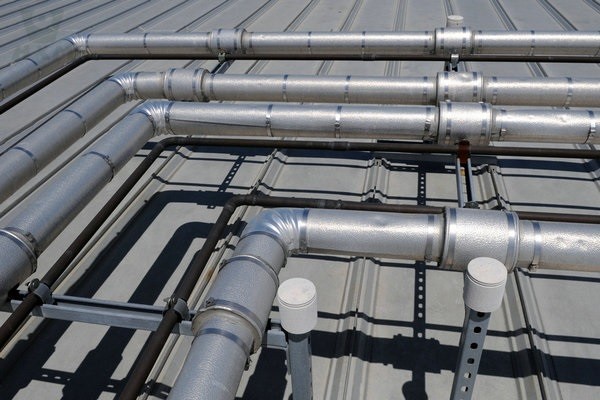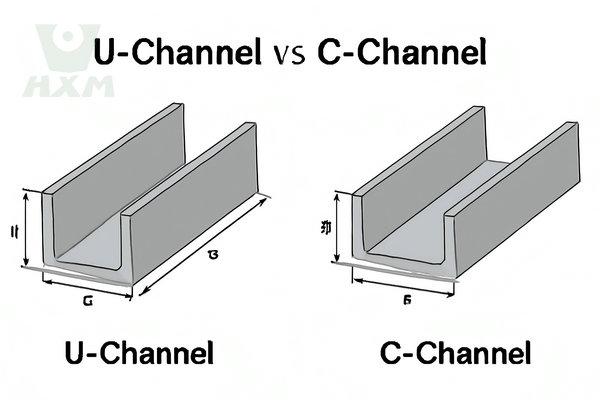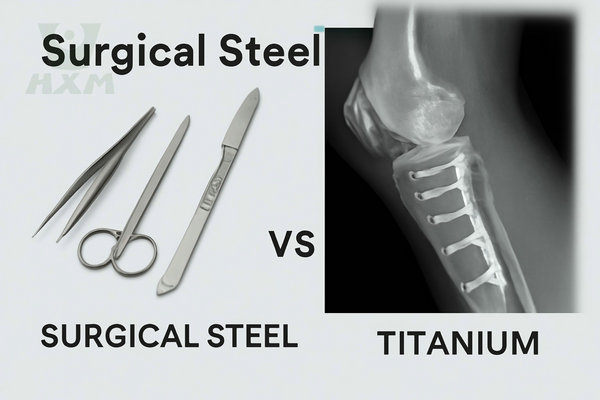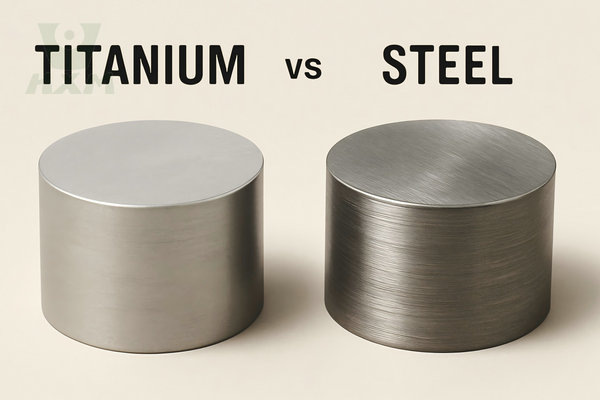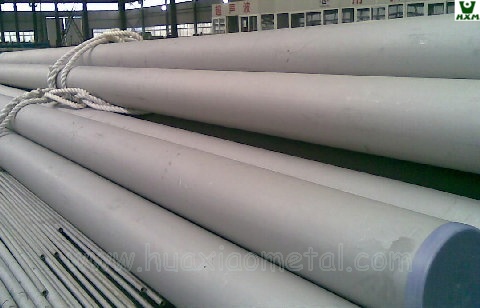
In industrial piping and civil projects, you will almost always encounter the term “Schedule 40” or “SCH 40”. As one of the most widely used pipe specifications in the world, Schedule 40 pipe plays a vital role in conveying fluids, structural support, etc. But what is it? What does the number “40” represent? How is it different from Schedule 80 pipe?
As a professional metal material supplier, Huaxiao Metal will provide you with a comprehensive analysis of what Schedule 40 pipe is, key technical parameters, materials, applications, and provide clear selection suggestions in this ultimate guide to help you make the most informed decision in your project.
What is Schedule 40 Pipe?
First of all, we need to clarify a common misunderstanding: “Schedule 40” does not directly refer to the diameter, wall thickness, or pressure of the pipe, but is a standard number to measure the grade of pipe wall thickness.
Before we delve into the applications and features of Schedule 40 Pipe, let’s first understand what Schedule 40 Pipe is. Schedule 40 Pipe refers to steel pipes with a specific thickness specified by relevant standards for the transportation of liquids and gases in the industrial and construction industries.
This “Schedule” (abbreviated as SCH) numbering system was established by the American National Standards Institute (ANSI) to standardize the wall thickness of pipes under different nominal pipe sizes (NPS). The core principle is:
For the same nominal pipe size (NPS), the larger the Schedule number, the thicker the wall thickness of the pipe.
For example, a SCH 80 pipe with an NPS 2″ has a thicker wall than a SCH 40 pipe with an NPS 2″.
Therefore, Schedule 40 Pipe refers to a range of pipes manufactured to this specific wall thickness standard. It represents a medium-wall thickness specification and is highly favored because it strikes an excellent balance between strength and cost.
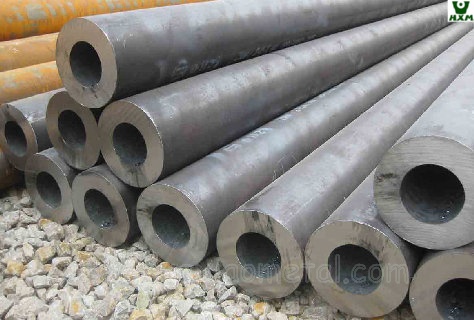
By using a standardized pipe thickness classification system, such as Schedule 40, one can ensure that the pipe used in industrial and construction projects meets specific codes and requirements. This helps to ensure that the pipeline can withstand the required pressure in high and low-pressure environments and guarantees the safety and reliability of the pipeline system.
Schedule 40 pipe is usually made of high-quality steel for good durability and strength. They are used for the transfer of a wide variety of liquids and gases, including water supplies, chemicals, oil and gas, and more. By selecting the proper Schedule 40 steel pipe, one is able to meet the needs of various industrial and construction projects and ensure the efficient operation of the piping system.
Now that we understand the definition and basic concepts of Schedule 40 pipe, let’s explore its wide range of applications and why it is the piping material of choice in many industries.
Key technical parameters of Schedule 40 Pipes: size, pressure and weight
Professional technical parameters are the basis for evaluating and selecting pipes. Here is the core data you need to know about SCH 40 pipe.
Schedule 40 Pipe Dimensions
Knowing the exact size of your pipe is critical. The table below lists the nominal outside diameter(OD), wall thickness, and inside diameter (ID) of Schedule 40 pipe for some common Nominal Pipe Sizes (NPS).
| NPS | OD (in/mm) | Wall Thickness (in/mm) | ID (in/mm) |
| 1″ | 1.315 / 33.4 | 0.133 / 3.38 | 1.049 / 26.6 |
| 2″ | 2.375 / 60.3 | 0.154 / 3.91 | 2.067 / 52.5 |
| 4″ | 4.500 / 114.3 | 0.237 / 6.02 | 4.026 / 102.3 |
| 6″ | 6.625 / 168.3 | 0.280 / 7.11 | 6.065 / 154.1 |
| 8″ | 8.625 / 219.1 | 0.322 / 8.18 | 7.981 / 202.7 |
| 10″ | 10.750 / 273.0 | 0.365 / 9.27 | 10.020 / 254.5 |
Schedule 40 Pipe Pressure Rating
The pressure rating of a No. 40 pipe is not a fixed value. It depends on three factors: pipe material, pipe wall thickness, and operating temperature. Generally, as the temperature rises, the pressure rating of the pipe decreases.
Engineers often use Barlow’s formula to calculate the maximum allowable pressure of a pipe. But a basic principle is that a pipe with a thicker wall can withstand higher pressure under the same material and size. Therefore, for high-pressure applications, a No. 80 pipe with a thicker wall is a safer choice.
Schedule 40 Pipe Weight Chart
| NPS | Weight (lbs/ft) | Weight ( kg/m ) |
| 1″ | 1.68 | 2.50 |
| 2″ | 3.65 | 5.44 |
| 4″ | 10.79 | 16.07 |
| 6″ | 18.97 | 28.26 |
| 8″ | 28.55 | 42.55 |
| 10″ | 40.48 | 60.31 |
Applications of Schedule 40 Pipes: more than just carbon steel
Although carbon steel is the most common material for No. 40 pipe, it can also be made of a variety of materials depending on the different corrosion resistance, sanitation, and strength requirements.
Carbon Steel: A53, A106B, etc. High strength and cost-effectiveness it is the main forces in the industrial and construction fields.
Stainless Steel: SS304/304L, SS316/316L, etc. Provides excellent corrosion resistance and is suitable for harsh scenarios such as food processing, chemical industry, and marine environment.
PVC (Polyvinyl Chloride): Lightweight, corrosion-resistant, low-cost, widely used in low-pressure water supply, drainage, and irrigation systems.
Schedule 40 steel pipe has a wide variety of applications in industrial and construction projects, and its diverse capabilities make it the piping material of choice in many industries. Here are some common uses for Schedule 40 steel pipe:
Water Supply Systems:
Chemical Plant:
HVAC Systems:
Oil and Gas Industry:
Industrial Processing:
Overall, Schedule 40 tubing is very versatile and finds use in many different industries and applications. Whether in construction, manufacturing, chemical, or energy, they meet complex piping needs and provide safe, reliable material transfer and fluid control solutions.
By understanding the purpose of the Schedule 40 tube, we further understand its importance and usefulness. Next, we’ll explore the features and benefits of Schedule 40 pipe to see why it’s the piping material of choice for many industries.
Features and Benefits of the Schedule 40 Pipe
Schedule 40 pipe has several features and benefits that make it the piping material of choice in many industries. Here are some of the key features and benefits of Schedule 40 tubes:
Corrosion Resistance:
Schedule 40 pipes are generally made of high-quality steel, which has excellent corrosion resistance. This allows them to withstand a wide variety of aggressive liquids and chemicals, including acids, bases, salts, and other aggressive solutions.
High Strength and Reliability:
The thickness and material selection of the Schedule 40 tubing gives it exceptional strength and reliability. They are able to withstand the stress of high-pressure and high-temperature environments, maintaining the integrity and stability of piping systems.
Compression Resistance:
Due to its thicker wall thickness, Schedule 40 tubing has a high resistance to compression. This makes them suitable for transporting liquids or gases under high pressure, ensuring the safe operation of piping systems in applications with high-pressure requirements.
Easy to Install and Maintain:
Schedule 40 tubes are designed for easy installation and maintenance. Its standard size and connection interface make the assembly and disassembly process of the pipeline easier, reducing the time and cost of installation and maintenance.
Long Service Life:
Due to its corrosion resistance, high strength, and reliability, Schedule 40 tubing has a long service life. Once properly installed and maintained, they can provide reliable service for years or even decades.
Code Compliance:
Schedule 40 tubing complies with relevant industry standards and codes. This ensures the quality and performance of the pipe, enabling it to meet the requirements of a specific application and comply with standards for safety and reliability.
Overall, Schedule 40 pipe offers a range of advantages including corrosion resistance, high strength, reliability, and long service life. These features make it the preferred piping material for a wide range of applications in various industrial and construction projects. Whether in harsh environments or in high-pressure, high-temperature applications, Schedule 40 tubing provides reliable performance and long-lasting service.
Considerations for Selecting a Schedule 40 Pipe
When selecting the proper piping material, consideration of various factors is critical to ensuring the success and reliability of your project. When it comes to choosing Schedule 40 tubing, here are some factors to consider:
Application Requirements:
First, it needs to be clear what application the pipeline will be used for. Different applications may have different requirements for the pressure-bearing capacity, corrosion resistance, and temperature requirements of the pipeline. Make sure that the Schedule 40 pipe selected can meet the needs of the specific application to ensure the smooth operation of the piping system.
Environmental Conditions:
Environmental conditions are one of the important factors in selecting the appropriate piping material. Consider the environment the pipe will be in, such as high temperature, low temperature, wet or corrosive environments, and choose a Schedule 40 pipe material with the appropriate resistance.
Material Selection:
Schedule 40 pipes are usually made of steel, but in some cases, other materials such as stainless steel or copper are also available. According to specific needs, choose the appropriate pipe material to ensure that it has the required strength, corrosion resistance, and other properties.
Size and Wall Thickness:
Schedule 40 tubing exists in different sizes and wall thickness options. Depending on the pressure requirements of the application and the flow requirements of liquid/gas, select the appropriate size and wall thickness to ensure that the piping system can withstand the required pressure and meet the fluid delivery requirements.
Compliance with Code:
Ensure that the Schedule 40 pipe selected complies with applicable industry standards and codes. This helps ensure the quality, safety, and reliability of the pipeline while avoiding possible compliance issues.
Cost-Effectiveness:
Considering the cost-effectiveness of piping is also critical for many projects. Evaluate different Schedule 40 Tube suppliers and prices, considering quality, performance, and price to choose the most cost-effective option.
To sum up, selecting the appropriate Schedule 40 pipe requires a comprehensive consideration of application requirements, environmental conditions, material selection, size and wall thickness, code compliance, and cost-effectiveness. Ensure the reliability, safety, and long-term performance of your piping system by ensuring that your project needs are met through proper piping selection.
Schedule 40 vs. Schedule 80
“Should I use 40-gauge or 80-gauge?” This is the question we are asked most often. The answer depends on your specific application needs. Let us help you choose with a clear comparison.
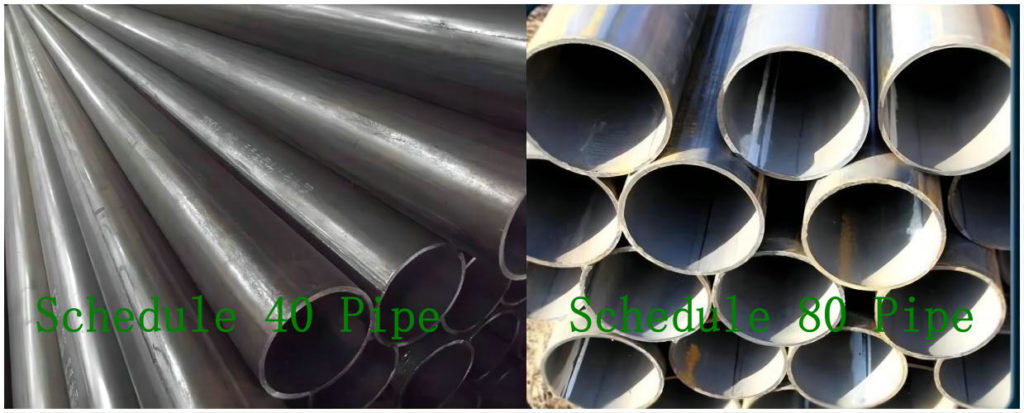
| Feature | Schedule 40 Pipe | Schedule 80 Pipe |
|---|---|---|
| Wall Thickness | Standard Wall | Extra-Heavy |
| Inside Diameter | Larger | Smaller (due to increased wall thickness) |
| Weight | Lighter | Heavier |
| Pressure Rating | Medium to Low Pressure | High Pressure |
| Cost | Lower | Higher |
| Typical Applications | Water supply, drainage, fire protection, low-pressure air lines, structural support | High-pressure steam, chemical plants, hydraulic systems, and applications requiring high strength |
Conclusion: If your project is mainly used for regular fluid transfer and low pressure, Schedule 40 is the most cost-effective choice. If the system needs to withstand high pressure, high stress or external physical impact, the more rugged Schedule 80 is a necessary investment.
In Conclusion
To sum up, Schedule 40 pipe as a quality piping material, its definition, usage, characteristics and selection factors are essential to understand its importance in industrial and construction projects. By understanding and applying this knowledge, we are able to make informed decisions and ensure that the appropriate Schedule 40 pipeline is selected for the needs, resulting in project success and reliability.
Whether you need carbon steel pipes for large industrial projects or stainless steel pipes for high-standard sanitary environments, the right selection and reliable quality are the key to project success.
Huaxiao Metal has a rich inventory of No. 40 pipes, providing a variety of materials and complete size options, including carbon steel, SS304, and SS316L. Our team of experts is always ready to provide you with professional technical advice to ensure that you get the piping solution that best suits your needs.
Need to purchase No. 40 pipes for your next project?

